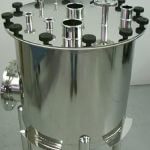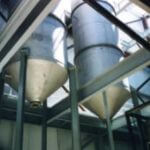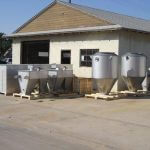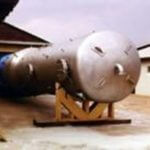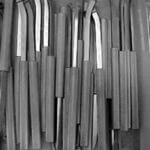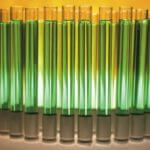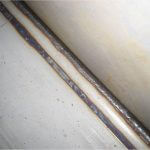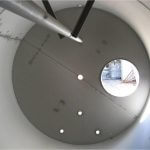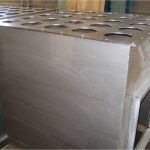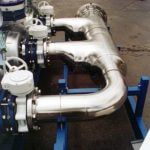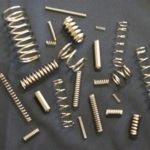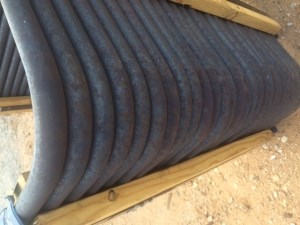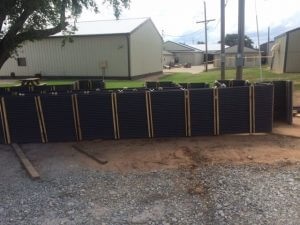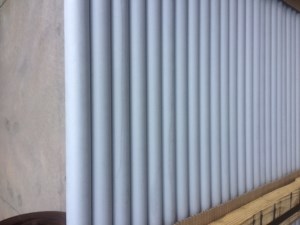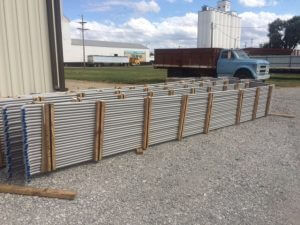Top Rate High Purity Passivation Service
Passivation is a chemical process that alters the surface of a metal or alloy, removing free iron from the surface and helping to greatly strengthen metals against rust and oxidation, making it a preferred method of corrosion control for many industries.
Chemically speaking, passivation is similar to electropolishing, except that it does not utilize electricity as a catalyst to remove imperfections in a metal surface. And while passivation isn’t quite as efficient as electropolishing, it is a more economic option that can be used with parts and containers that are too large to undergo the electropolishing process.
Celco’s Youtube Passivation Video
Passivation Image Examples
Check out some of the images below from our passivation image gallery.
The Passivation Process
The first step of passivation is to ensure that the component is free of chemicals that may adversely affect the chemical process. Technicians inspect for the presence of:
- Grease
- Oil
- Lubricants
- Forming Compounds
- Cutting Fluids
- Wax Markings
- Metallic Residue
- Any Other Contaminates
During this time, the piece is also inspected for metal quality and the strength of any welds.
After the component is inspected and properly cleaned, it is placed in a bath of nitric acid-based solution, or less commonly a citric acid-based solution.
The piece is left to soak in the chemical solution for a strictly controlled amount of time, leaving the surface smoother and more resistant to natural corrosion from exposure to air and fluids.
Applications Of Passivation
Passivation is a commonly used corrosion control method for countless products and industries. Some of the many industries that can benefit from the process are:
- Filter Housings
- Food & Beverage Processing
- Forgings & Castings
- Stainless Steel Framework
- Medical & Pharmaceuticals
- Pipes & Piping
- Springs & Stampings
- Tower Internals
- Stainless Steel Vessels
- Water Treatment & Distribution
- Marine & Aerospace
Any industry that requires contaminate-free, corrosion-resistant parts and components can reap the benefits of having high quality passivation.
Benefits Of Our Passivation Technique
The obvious primary benefit of the passivation process is an increased corrosion resistance. However, there are a multitude of other benefits that come along with passivation as well, including:
- Removal of surface contamination from machined parts.
- Removal of black marks left on stainless steel during forging and forming.
- Removal of heat tint left behind by welding.
- Removal of rust contamination on parts that have already been in service.
Under rigorous and detailed control, there is no need to worry about parts suffering damage or altered dimensions.
Again, while most of these benefits are not garnered as greatly as with the electropolishing process, passivation is a viable alternative for pieces that cannot be electropolished due to their size, shape, or any other reason.
Looking For A Good Passivation Company?
Celco specializes in passivation service and is recognized nation-wide as a leader in the industry. Our dedication to quality ensures that every piece is carefully inspected, monitored, and tested at every point throughout the process.
We pride ourselves in our facility as having the capability to passivate components of nearly any size or shape – even massive pieces are not beyond our capabilities – and our mobile services can bring our celebrated methods directly to you.
Contact us today to learn more about how Central Electropolishing Company’s powerful passivation services.
Celco Inc. is qualified to do the following specifications:
- ASTM A967-01
- ASTM-A380
- BAC 5625
- BAC 5751
- CSFS 001
- DPS 9.07
- MIL-E-407
- MIL-S-5002D
- QQP-35
- ZES-4B-11

